Ihlara Valley is one of the most unexpected and breathtaking landscapes in Cappadocia. While the region is best known for its honeycomb-like cave dwellings, surreal rock formations, and semi-arid plateaus, Ihlara offers a dramatic change of scenery. This verdant canyon, carved by the Melendiz River, is a lush oasis where towering cliffs shelter a ribbon of green that winds through the heart of volcanic rock country.
We visited as part of the popular Green Tour—a full-day guided excursion that also includes stops at Pigeon Valley, Derinkuyu Underground City, and Selime Monastery. It’s an ideal way to experience Ihlara without the logistics of getting there yourself, and it provides a perfect balance of nature, history, and culture. The valley hike itself takes just over an hour, offering plenty of time to soak in the scenery, explore hidden churches, and appreciate the cooler, shaded microclimate created by the river.
A green ribbon through a volcanic landscape
Ihlara Valley stretches for about 14 kilometers (8.7 miles), with sheer rock walls rising up to 150 meters (490 feet) on either side. The trail meanders alongside the Melendiz River, which nourishes a surprisingly lush environment for central Anatolia. Poplars, willows, and fruit trees form a dense canopy overhead, while wildflowers and reeds edge the riverbanks. Birdsong replaces the usual wind-whipped quiet of Cappadocia's open plateaus, and the sound of rushing water is a constant, soothing presence.
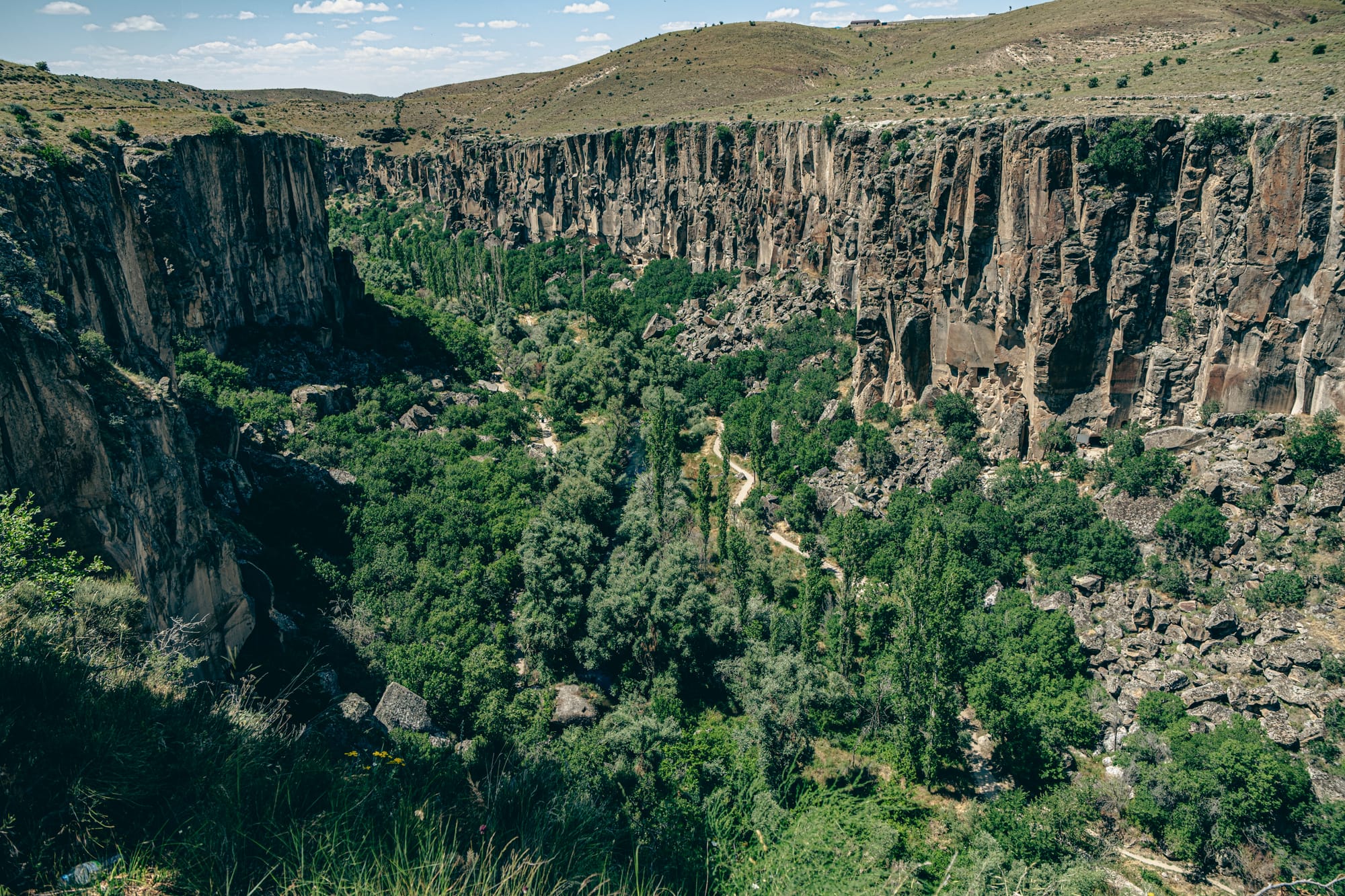
The contrast between the greenery and the ochre-hued canyon walls is striking. As you walk, you’ll notice that the cliffs themselves are pockmarked with entrances and windows. Many of these are man-made caves carved directly into the soft volcanic tuff, historically used as dwellings, pigeon houses, and places of worship.
The geology and formation of Ihlara Valley
The valley owes its existence to both ancient volcanic activity and persistent erosion. Millions of years ago, eruptions from Mount Hasan and other nearby volcanoes blanketed the region in thick layers of ash, which compacted into soft tuff stone. Over time, the Melendiz River began to carve its way through this tuff, slicing a deep canyon into the plateau.
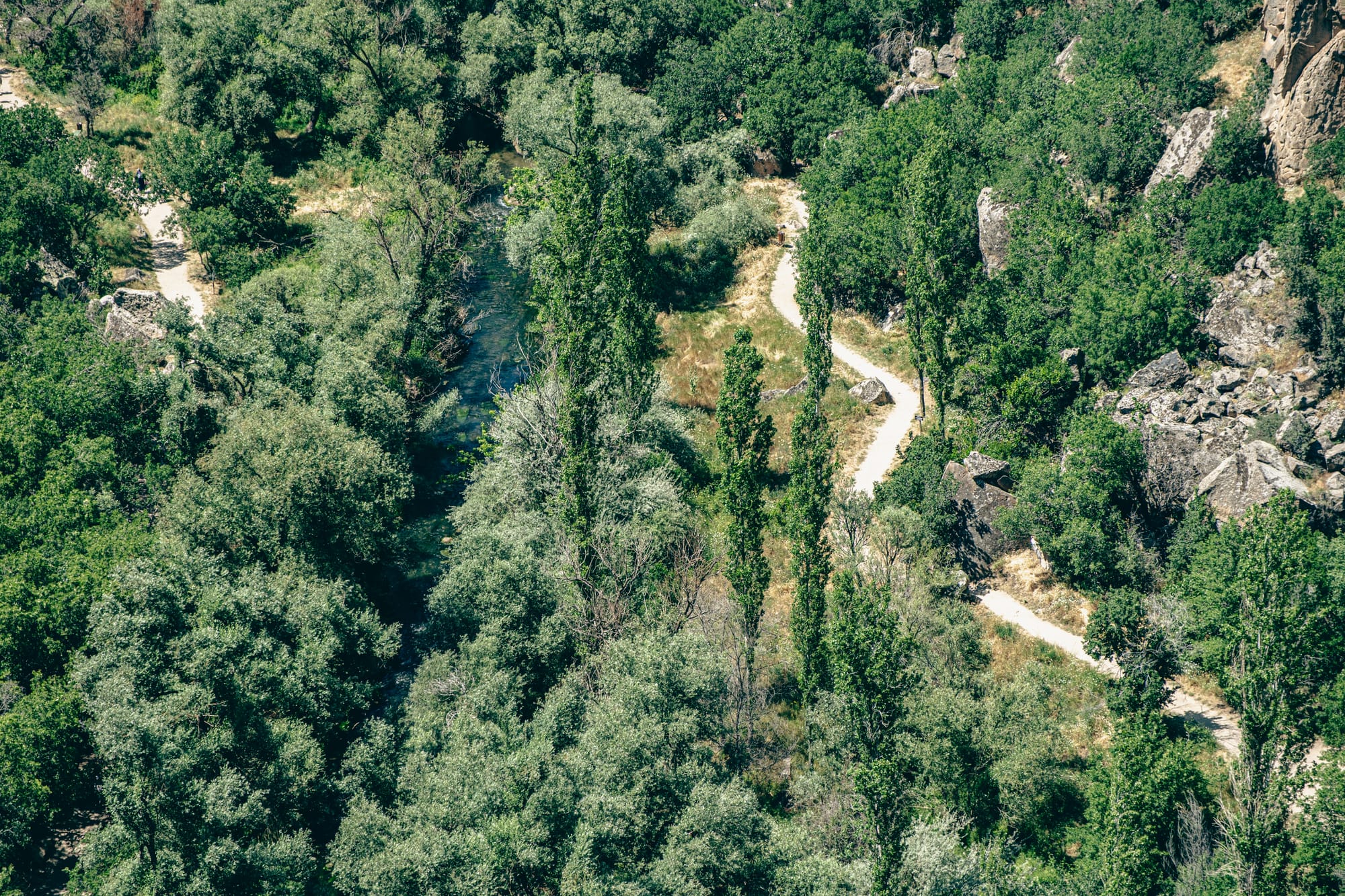
The softness of the rock made it easy for humans to carve dwellings and churches into the canyon walls.
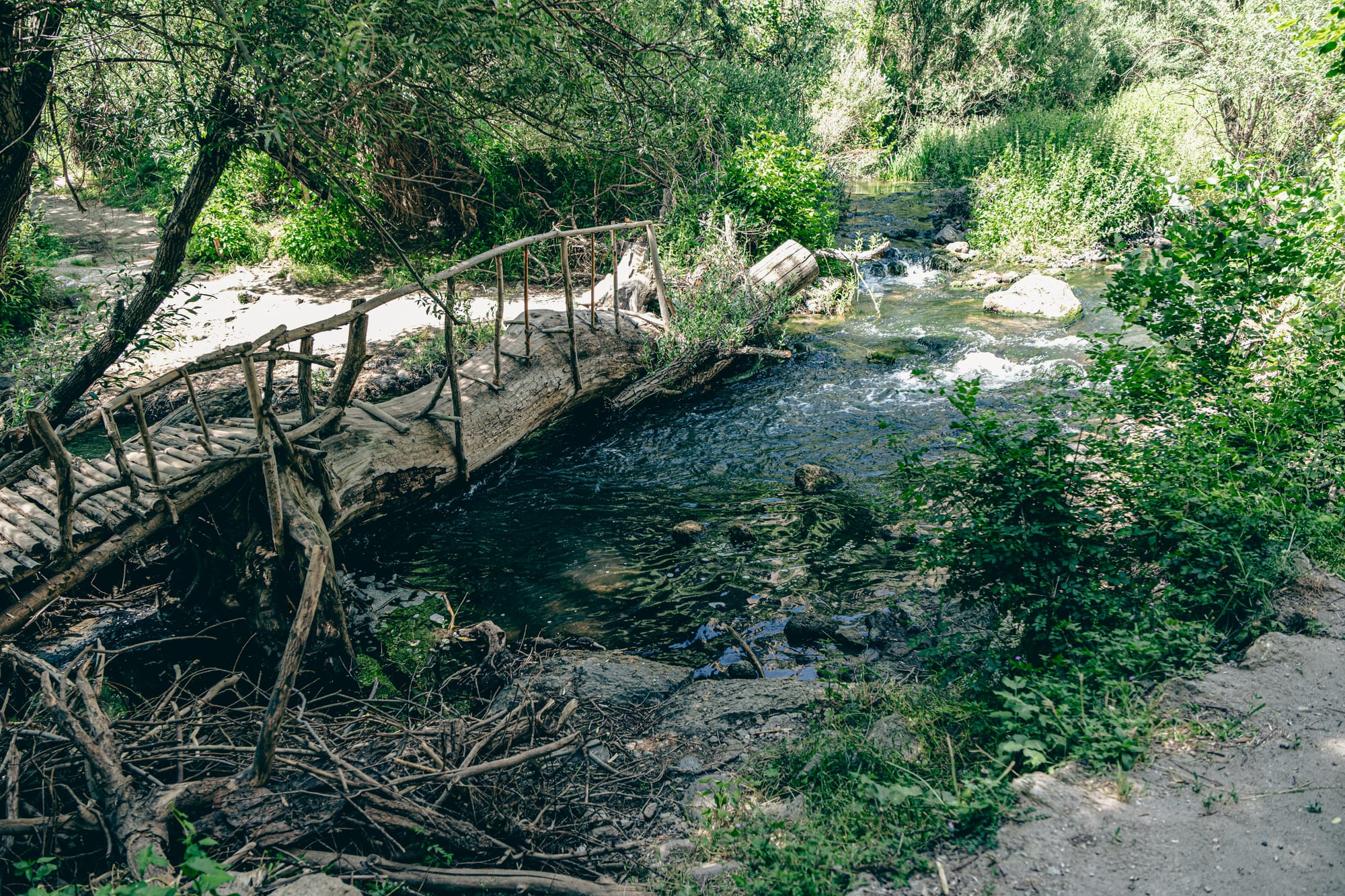
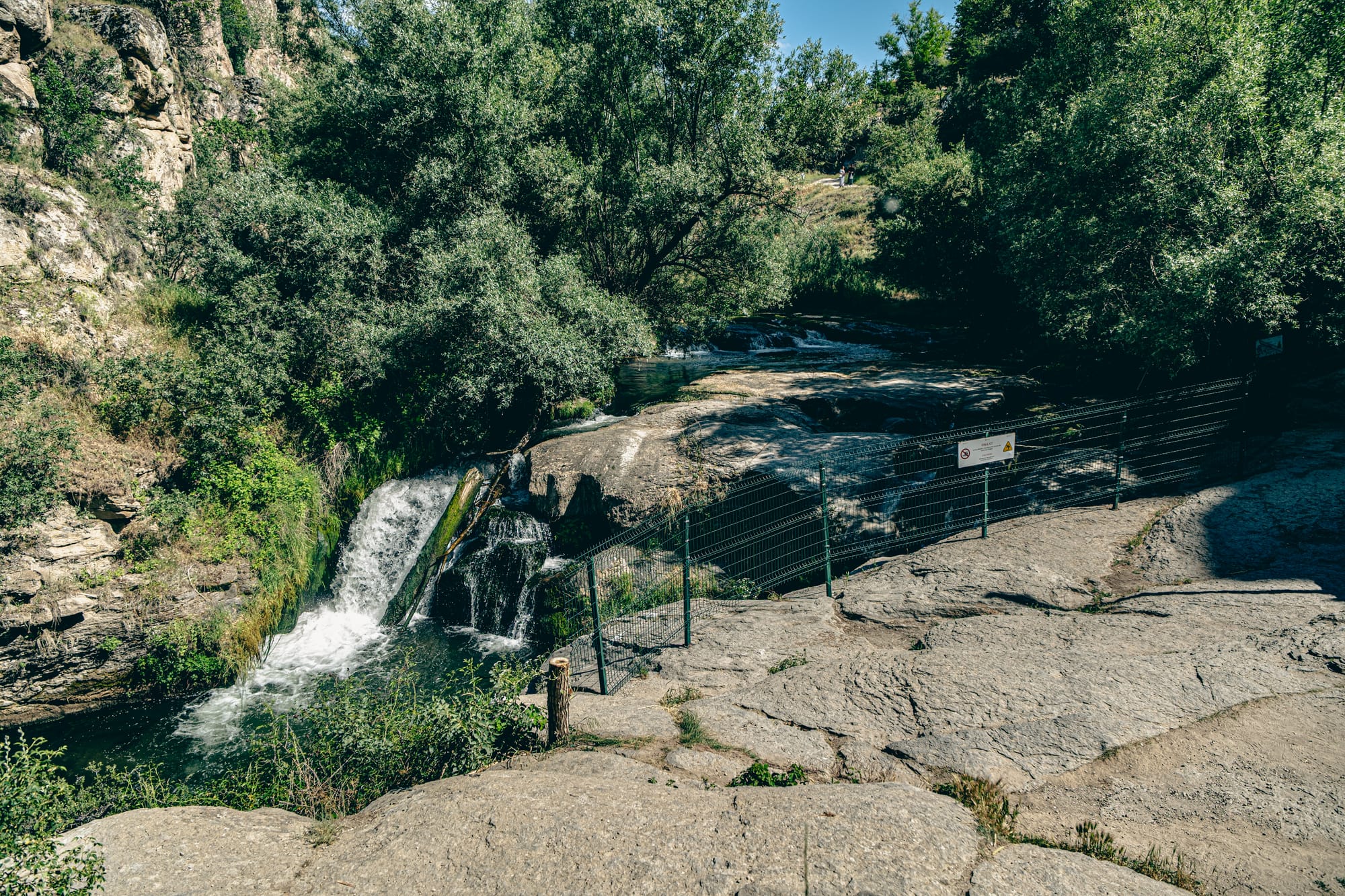
Wooden bridge and small waterfall along the scenic Ihlara Valley trail
But the river is the real sculptor here, its steady flow continuing to deepen and shape the valley. Seasonal rains and snowmelt from the surrounding highlands swell the river, feeding the dense vegetation that sets Ihlara apart from the rest of Cappadocia.
A walk through history
Humans have inhabited the valley for thousands of years, with evidence of settlements dating back to the early Byzantine period. During the 4th to 11th centuries, Ihlara became a thriving monastic community. The canyon's secluded environment and abundant water made it ideal for hermit monks and small religious groups seeking solitude.
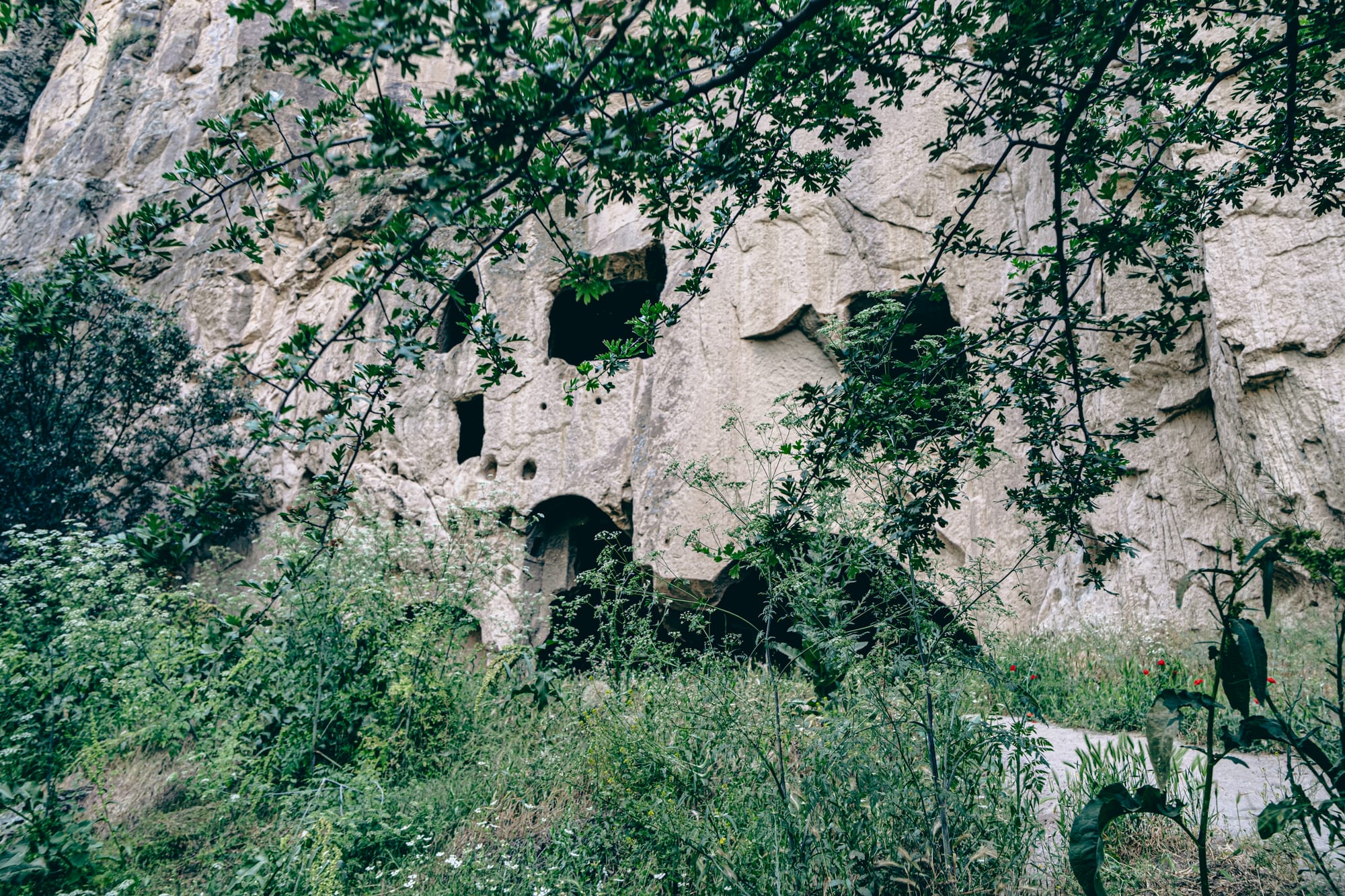
Over 100 rock-hewn churches and chapels are scattered along the valley, many of them decorated with frescoes. These paintings, created from natural pigments mixed with materials like egg yolk and plant extracts, depict biblical scenes in vivid reds, ochres, and blues that have endured for centuries.
Discovering the churches of Ihlara
While many of the valley's churches are accessible only via narrow paths and ladders, a few are easy to visit right from the main trail. The frescos inside range from simple crosses and geometric patterns to intricate narrative scenes of the life of Christ. Even in their weathered state, the colors remain vibrant thanks to the mineral-rich pigments.
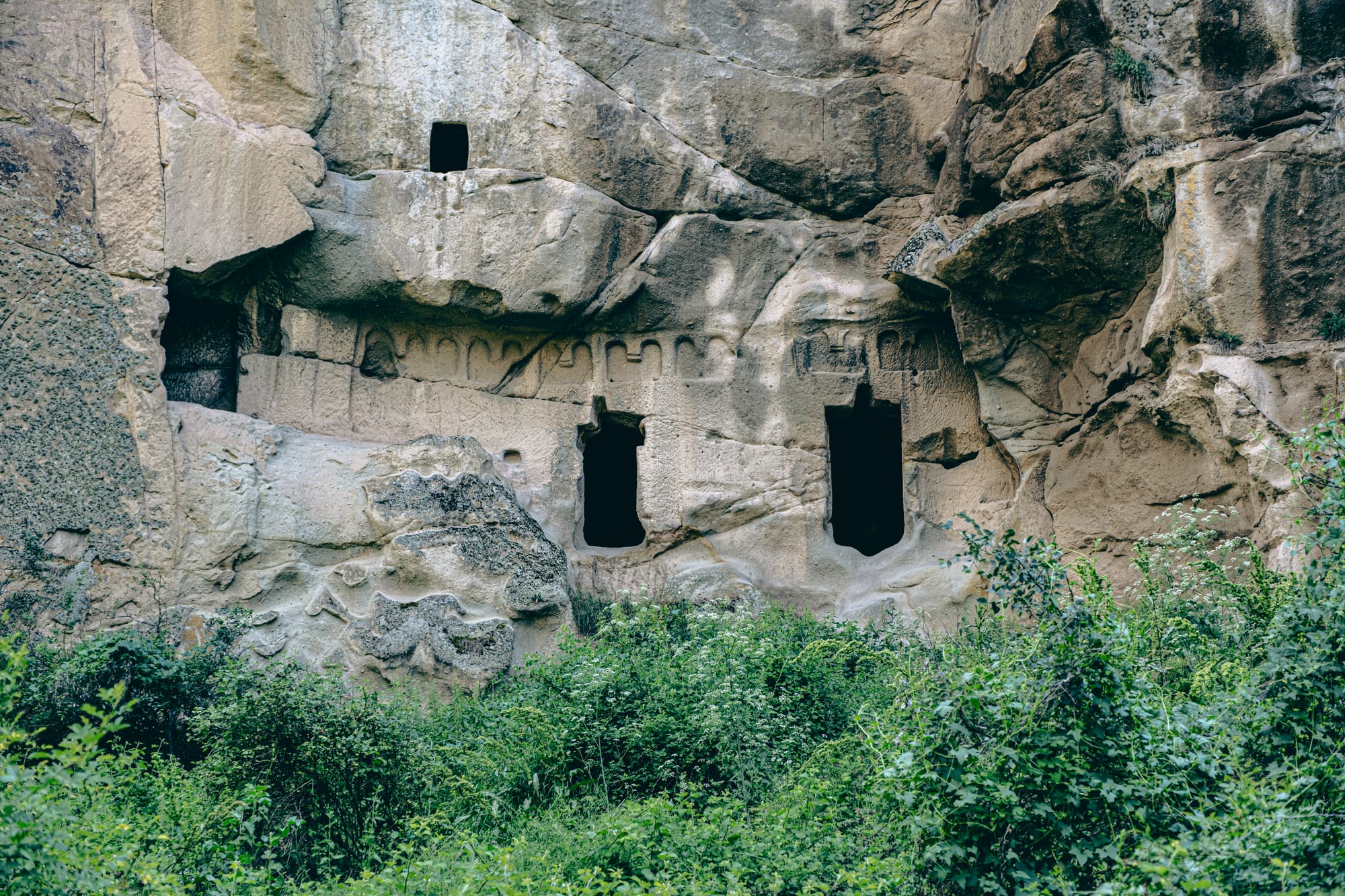
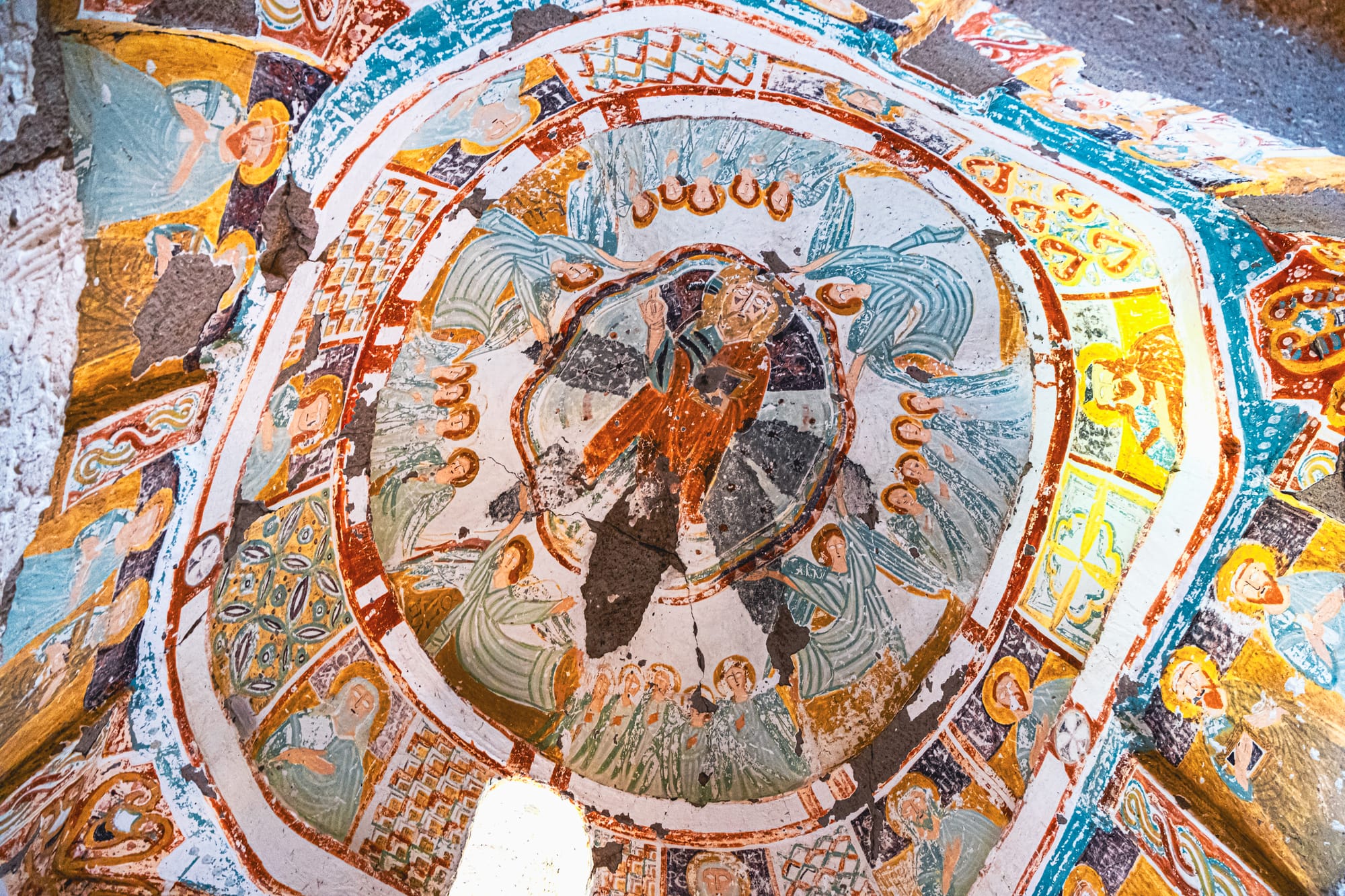
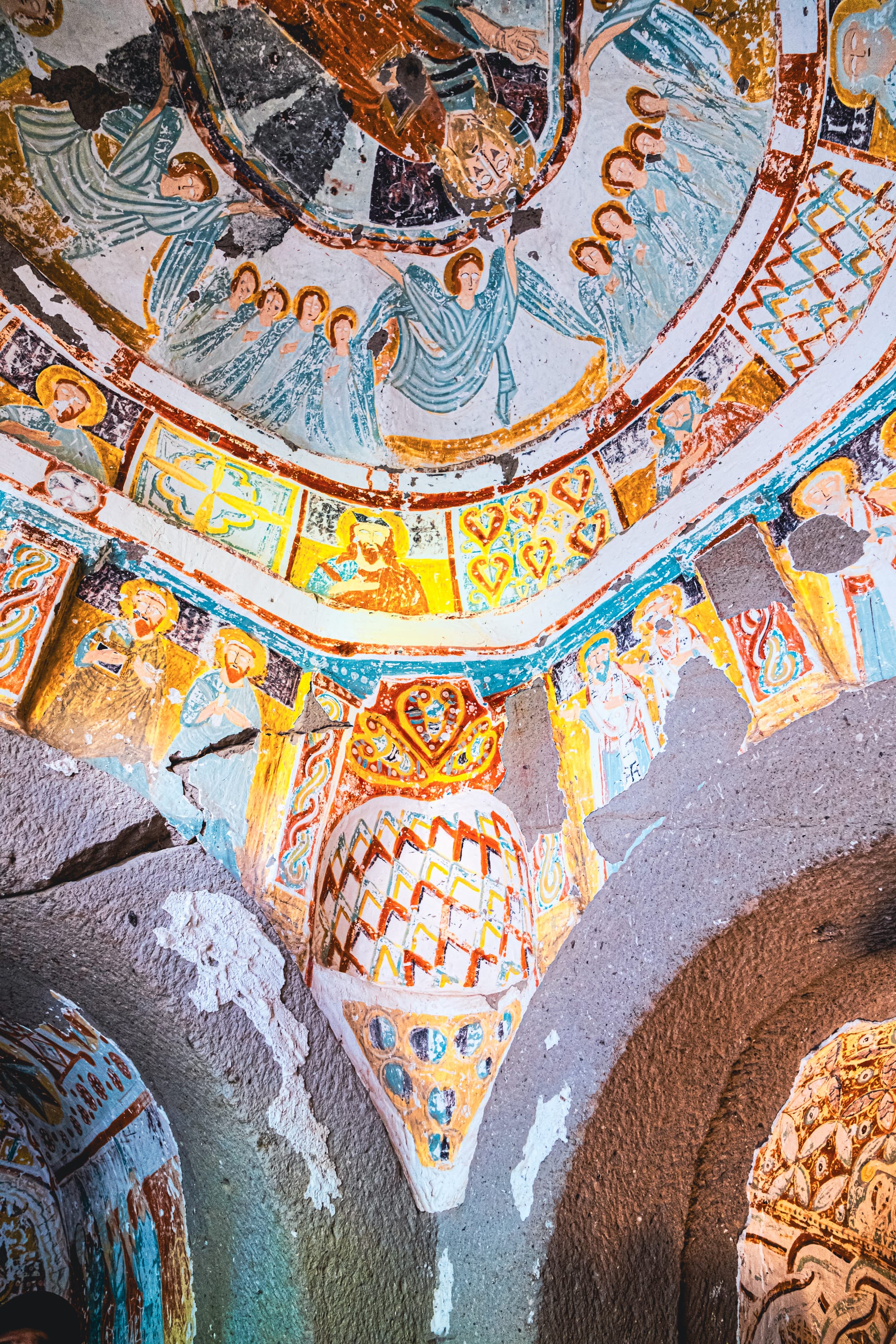
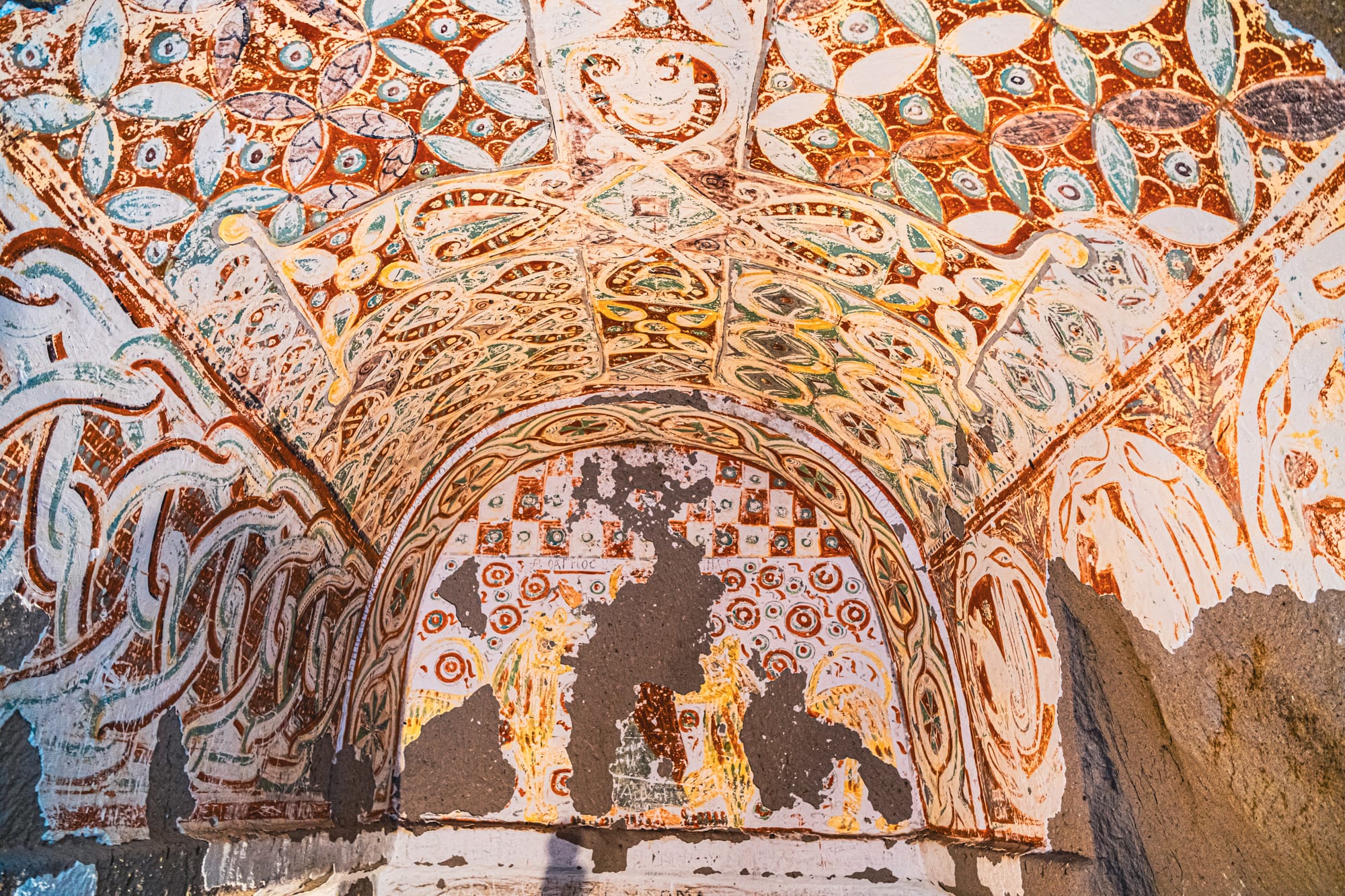
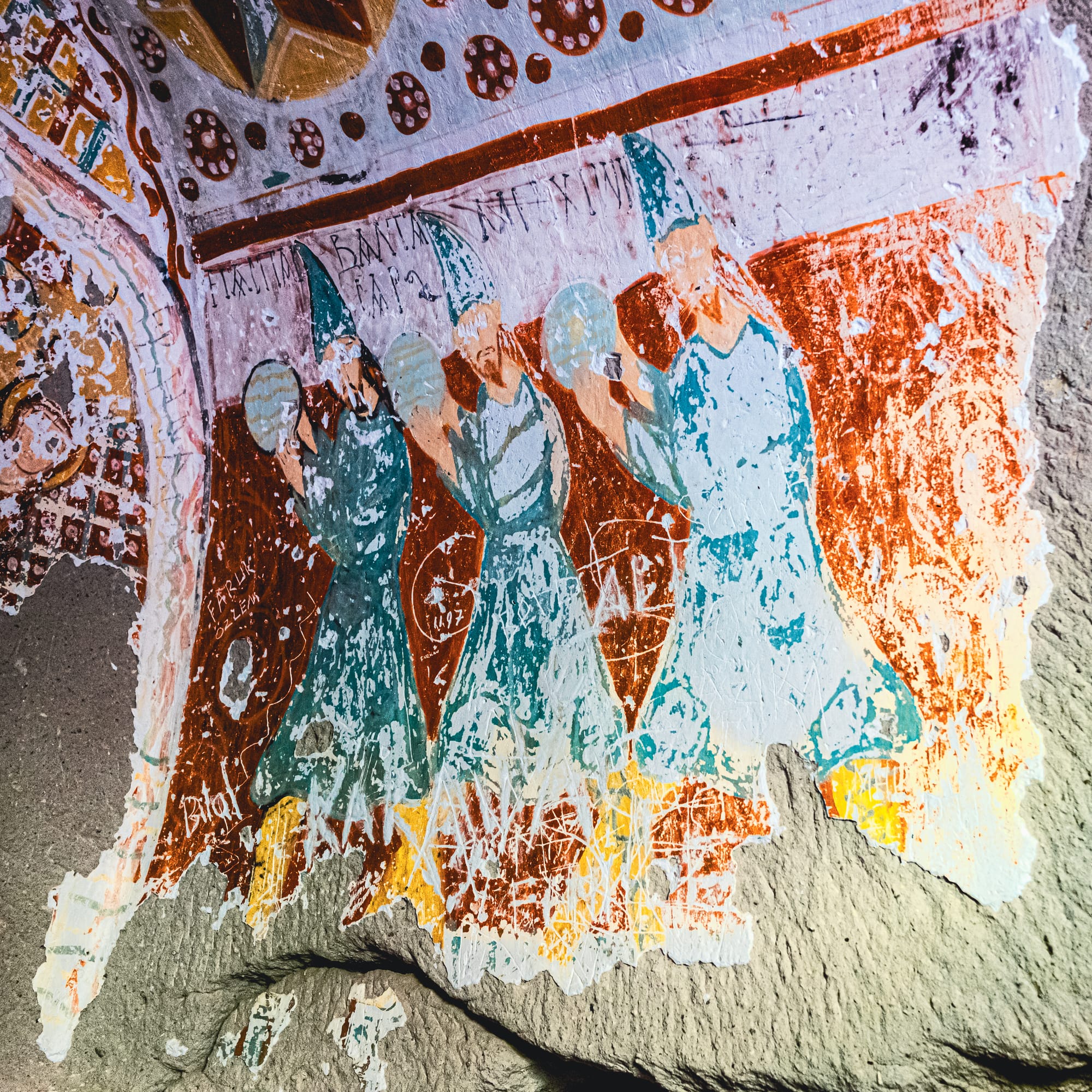
Vibrant frescoes inside a rock-cut church in Ihlara Valley
One of the highlights for us was stepping into a small church where the walls and ceilings were still richly painted. The artistry felt both intimate and enduring, a direct connection to the people who once lived and worshipped here. Knowing that the paints came from the surrounding natural environment made the experience even more special.
The hike experience
The Green Tour includes a shorter segment of the valley hike. It’s an easy and leisurely walk, suitable for all fitness levels. Along the way, you’ll pass shaded groves, cross small wooden bridges, and have opportunities to stop at cafes set right along the riverbank—perfect for a tea break with the sound of water rushing past.
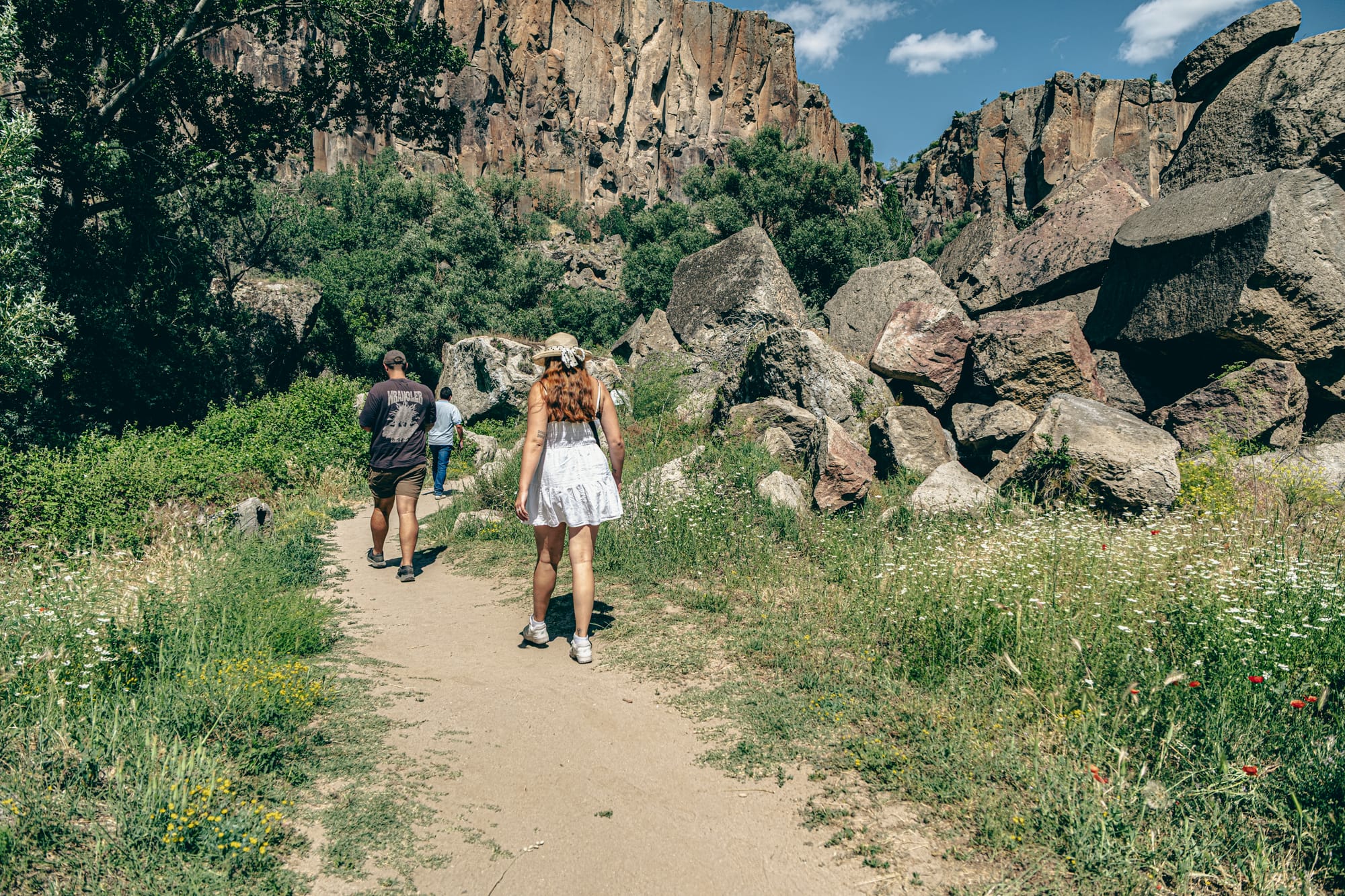
Even in summer, the valley offers a cooler microclimate compared to the open landscapes above. The high canyon walls provide shade for much of the day, and the dense greenery creates a refreshing, almost alpine atmosphere.
Wildlife and natural beauty
The river and vegetation attract a variety of wildlife. You might spot kingfishers darting along the water, lizards sunning themselves on the rocks, or even turtles resting on partially submerged logs. In spring and early summer, the wildflowers are in full bloom, painting the valley floor with splashes of yellow, red, and purple.
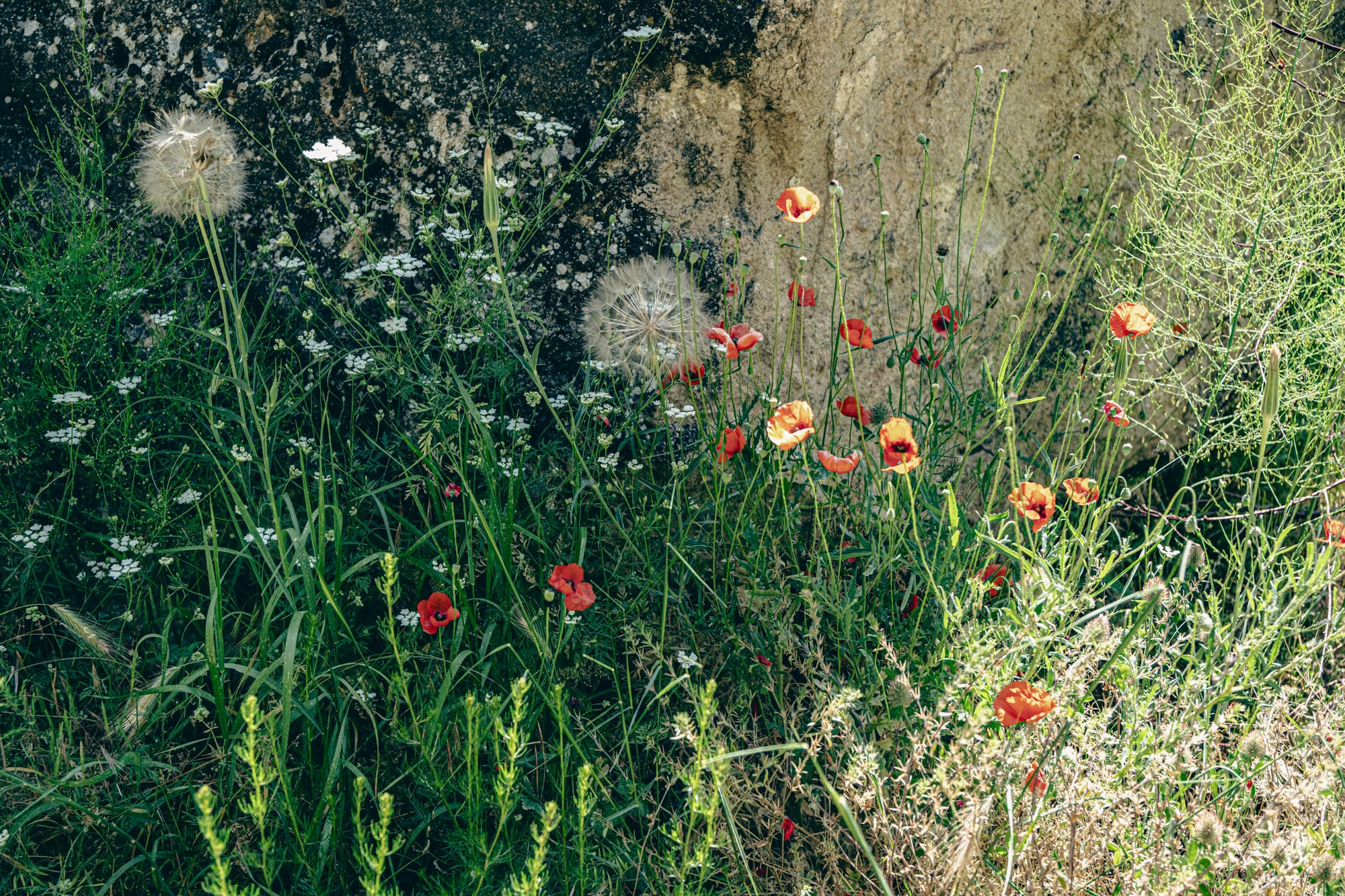
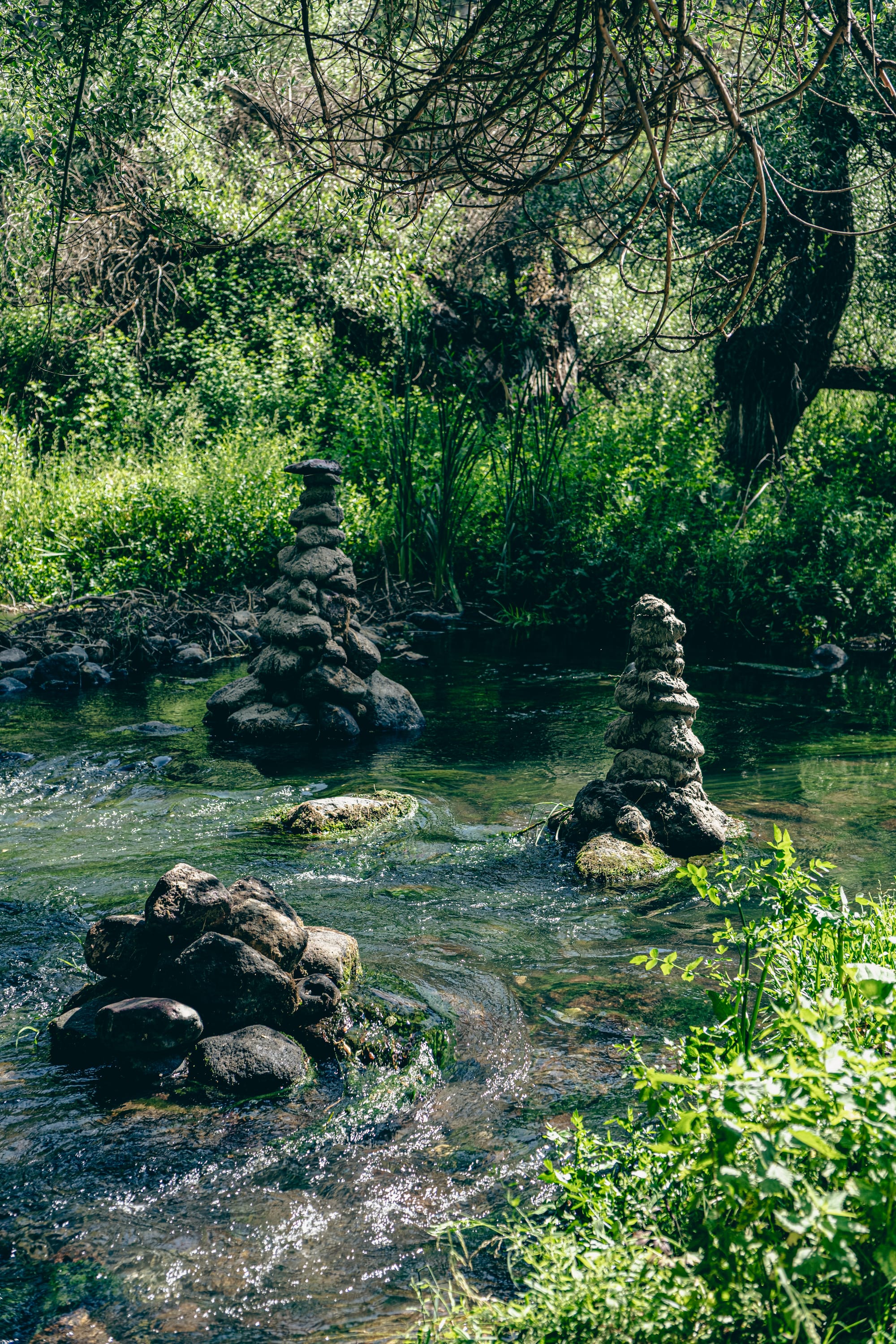
Wildflowers and riverside stone stacks adding charm to the lush Ihlara Valley trail
The diversity of plant life is also remarkable for this part of Turkey. In addition to willows and poplars, you’ll find walnut, apricot, and mulberry trees, along with aromatic herbs growing wild along the trail.
Visiting Ihlara Valley
Ihlara Valley is a side of Cappadocia that many visitors miss, but it offers a refreshingly different perspective on this extraordinary region. With its lush vegetation, meandering river, and rich history carved into the canyon walls, it’s an unforgettable destination for nature lovers, history enthusiasts, and anyone looking to slow down and enjoy the landscape.
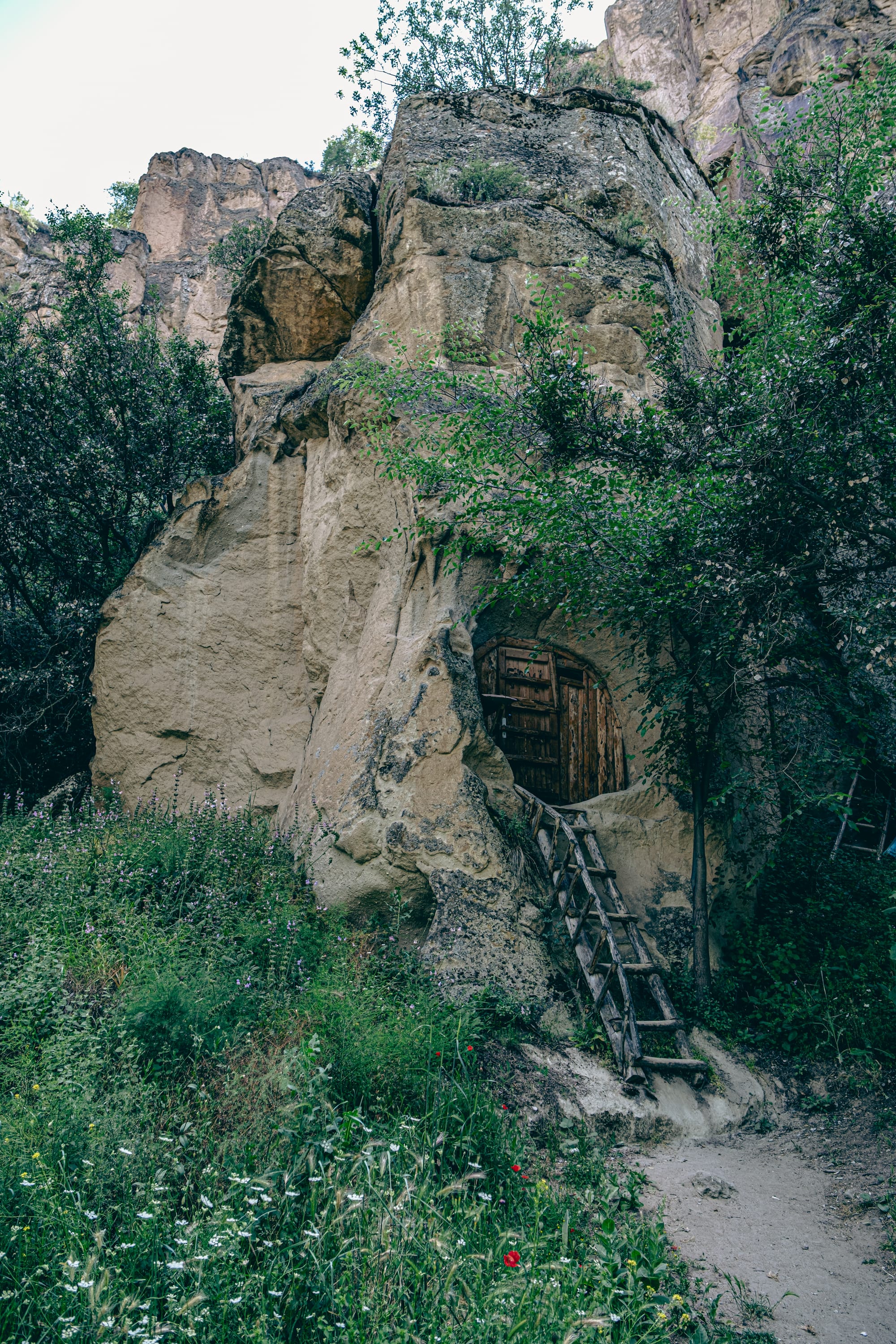
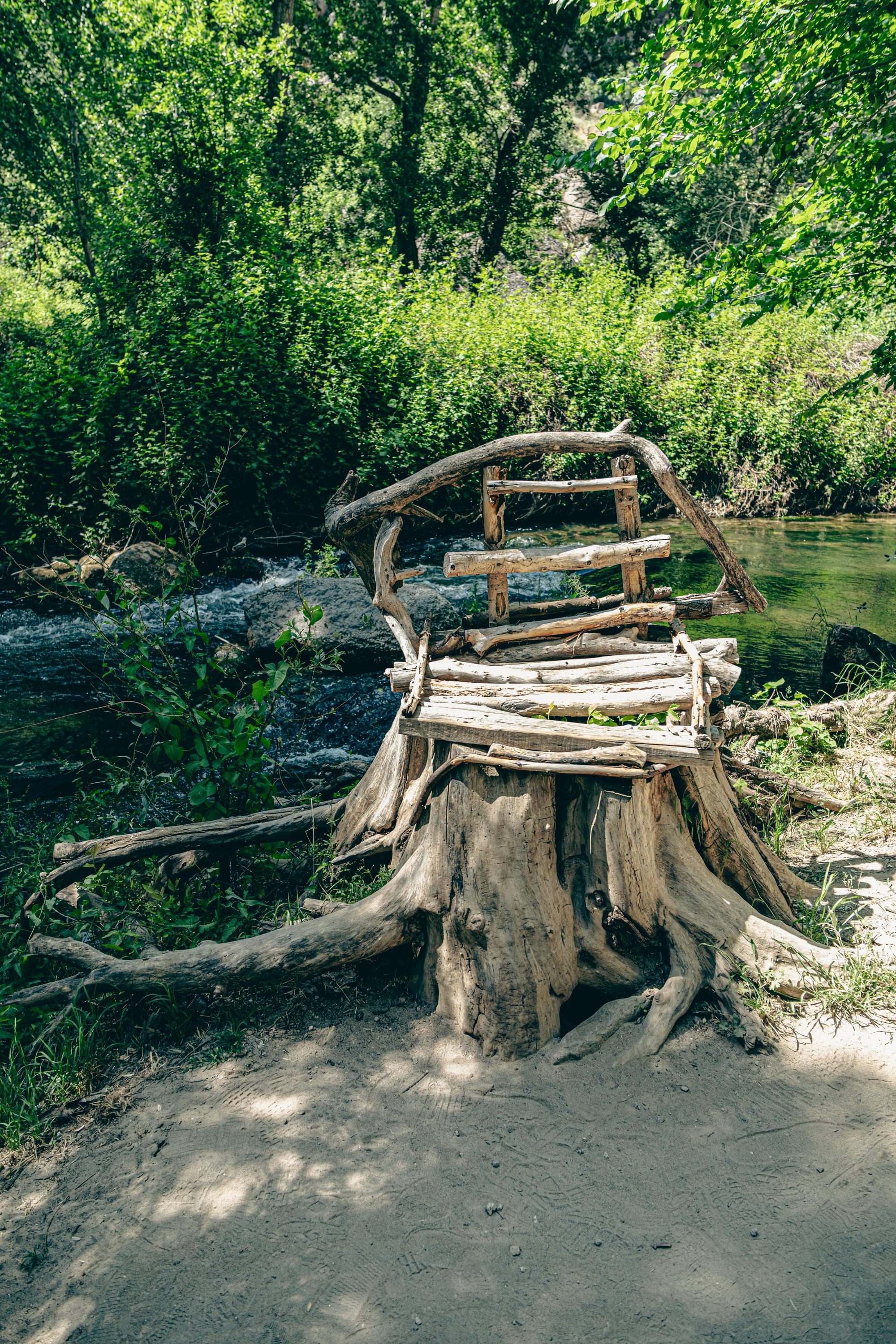
Rustic wooden ladder to a cave doorway and a riverside chair made from tree roots
While it’s possible to visit Ihlara independently, the Green Tour makes the experience seamless and stress-free. Not only do you get guided insight into the valley’s history, geology, and cultural significance, but you also combine the hike with other major Cappadocia highlights. From the underground marvel of Derinkuyu to the panoramic vistas of Pigeon Valley and the monumental Selime Monastery, it’s a full day that showcases the diversity of the region.
You can book the exact tour we took here—it’s a fantastic way to experience Ihlara Valley and so much more.






